How to grow garlic – a step by step guide to growing from cloves
Learn how to successfully grow this favorite crop, whatever the size of your garden or patio


Garlic is one of those ingredients that is used almost constantly in the kitchen. Romantic Gallic images of long knotted bulbs can be intimidating when considering growing this bulb. However, garlic is a surprisingly easy crop to grow – and now is a good time to plant.
We’ve spoken to industry experts to provide you with insider advice on how to grow garlic in your garden. This versatile crop can be grown in containers and beds, perfect for a garden of any size. Why not try this weekend? Get in the know about when to plant garlic to enjoy its tasty bulbs throughout the year. It is also worth learning how to store garlic to ensure that your bulbs stay fresh and flavorful for longer.
What type of garlic to grow?
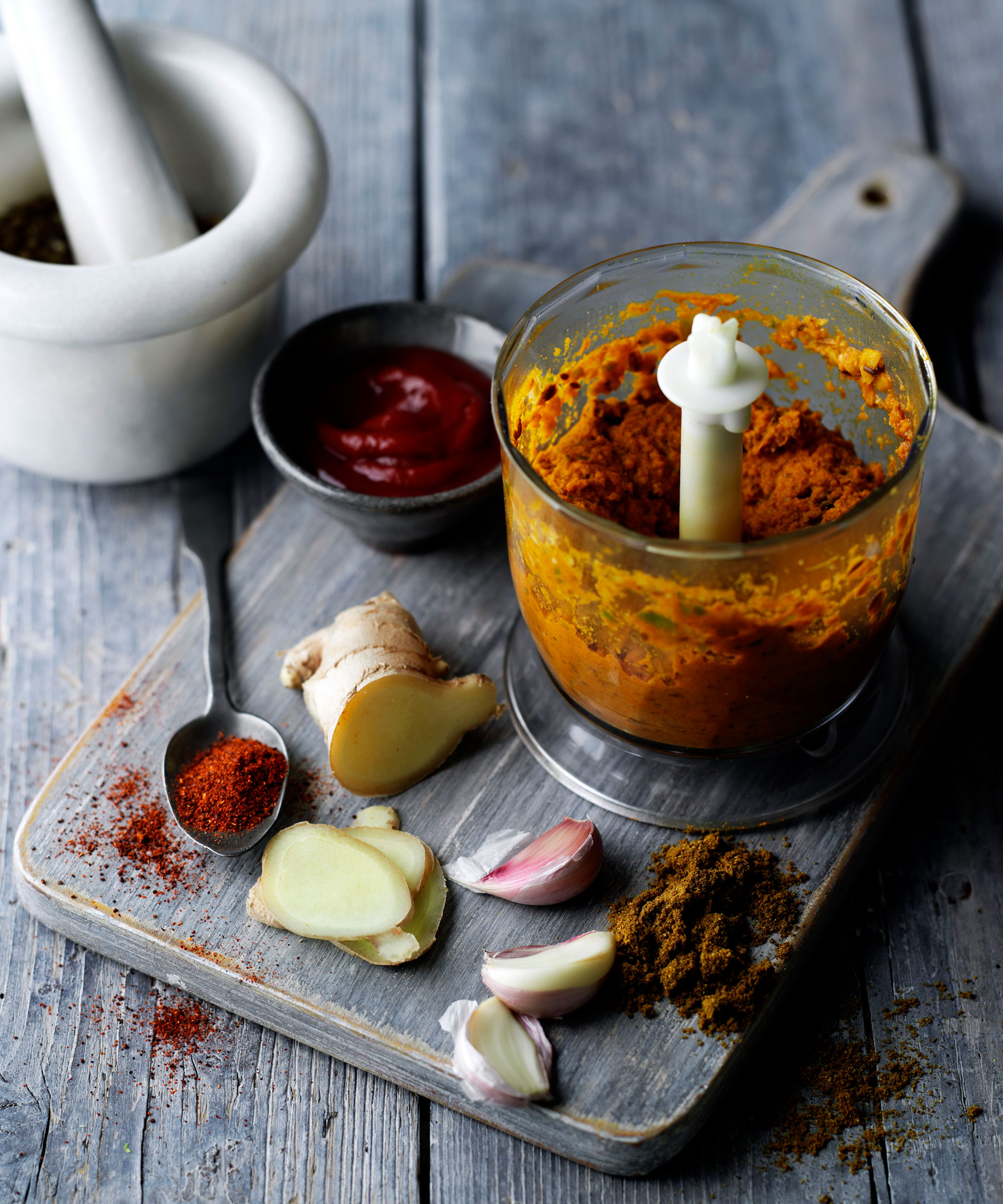
Photography/Jon Enoch
True garlic (Allium sativum) is available in softneck or hardneck form. Softneck varieties (such as ‘Messidor’), which are the type sold in shops, store for a year and the pliable necks can be plaited, making them great decor for the larder.
Hardneck varieties (such as ‘Sprint’) have a stronger taste, suit very cold areas, harvest earlier, and produce edible flower stems called scapes. However, they only store until spring. Growing both types of garlic ensures you a supply of delicious garlic all year.
Softneck garlic is the easiest garlic to grow and is the type commonly found in supermarkets.
Softneck garlic produces a lot of smaller cloves and can be stored for months. These are the ones you will typically see plaited on market stalls. However, hardneck bulbs are hardier so a better choice if your garden experiences very cold winters.
Good varieties of softneck garlic to opt for are ‘Provence’ and ‘Solent Wight’. For hardneck garlic, look for ‘Lautrec Wight’ and ‘Carcasonne’ varieties.
‘When buying garlic to grow, it’s advisable not to buy from supermarkets as these are not certified disease free varieties. Instead, buy from a garden centre or by mail order,’ advises Franscesco Ponziani, Horticulturist at RHS Garden Harlow Carr.
Elephant garlic (Allium ampeloprasum) is a different type of plant. It looks like a big leek, but has a mild garlic taste and produces a few big cloves (which sometimes can’t be divided). This interesting leek- like vegetable suits sunny gardens in high-rainfall areas.
How to grow garlic step by step
Garlic is easy to grow with a little know-how.
1. Prepare the ground
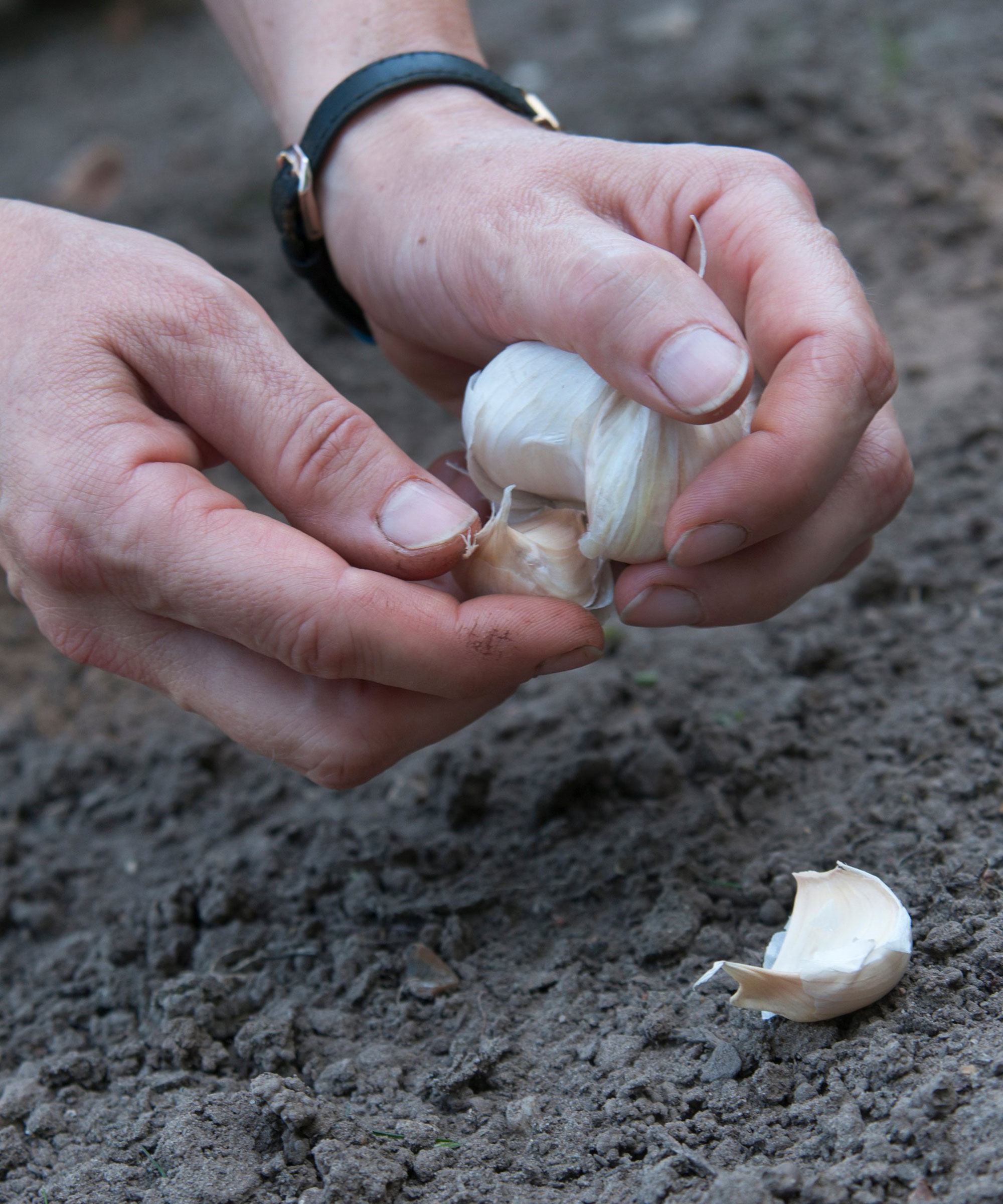
Photography/Tim Sandall
Garlic is an easy crop to grow as long as you get the basics right. ‘Garlic needs an open, sunny position and well-drained soil,’ explains Francesco.
Dig in plenty of garden compost before planting the garlic bulbs or well-rotted manure. ‘If your soil is very heavy clay, add grit or plant bulbs in containers instead,’ recommends Kate Turner, Gardening Guru at Miracle-Gro.
As garlic crops take up only a small space, it can easily be grown in a container such as a Vegepod or a Vegebag which won the RHS Chelsea Flower Show product of the year 2020. It can also be planted in between other crops to help them thrive, deterring pests with its pungent scent.
2. Plant the bulbs
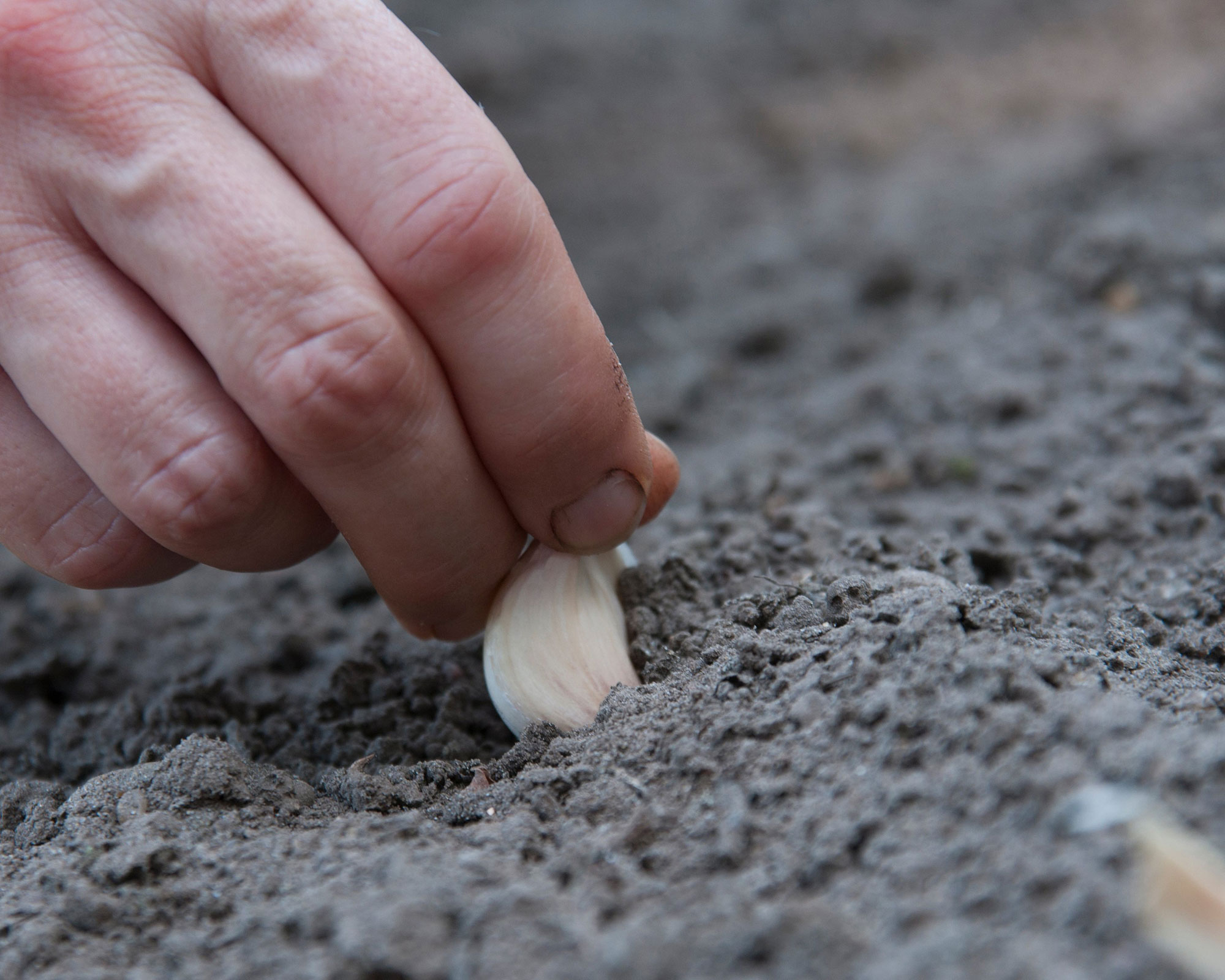
Photography/Tim Sandall
Before planting the bulbs you will need to break them up into individual cloves. Plant each clove 10 to 15 cm apart, with 30 cm between each row.
If you are planting in a container, Francesco recommends using a 9cm pot. Plant each clove in its own individual pot.
Make sure each clove is planted pointing upwards, with the tip of the clove showing above the soil. Water after planting to help the soil settle around the bulb.
3. Cover the bulbs as they grow
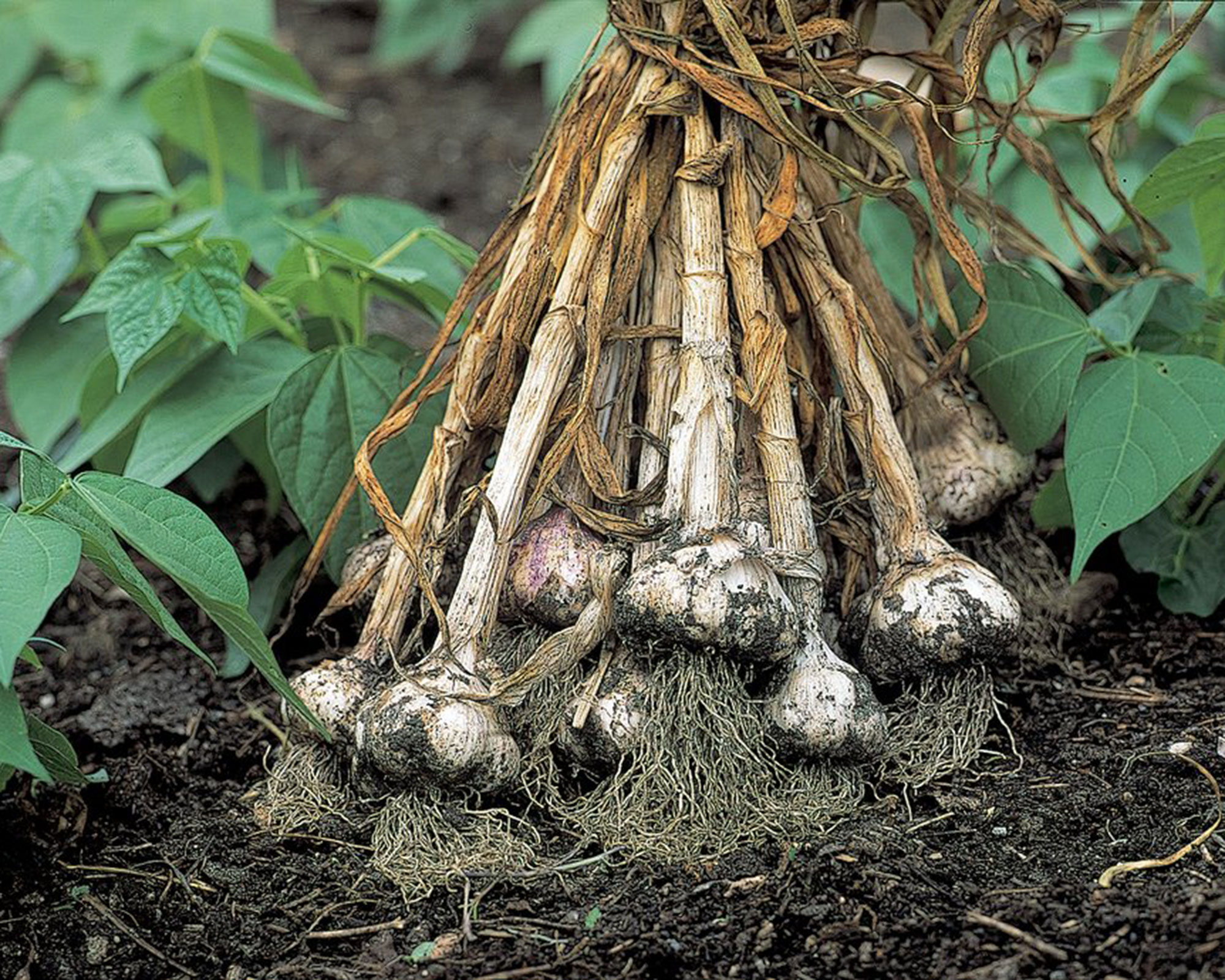
Photography/Georgi Mabee
Kate Turner recommends covering the area with horticultural fleece or cloches to stop birds pulling up the seedlings as they appear. ‘Once the plants grow larger, they are less attractive to birds and the protection can be removed,’ she explains.
Continue to water the garlic bulbs as they grow. However, as soon as a bulb is formed this is a sign to stop watering.
4. Cut off the scape
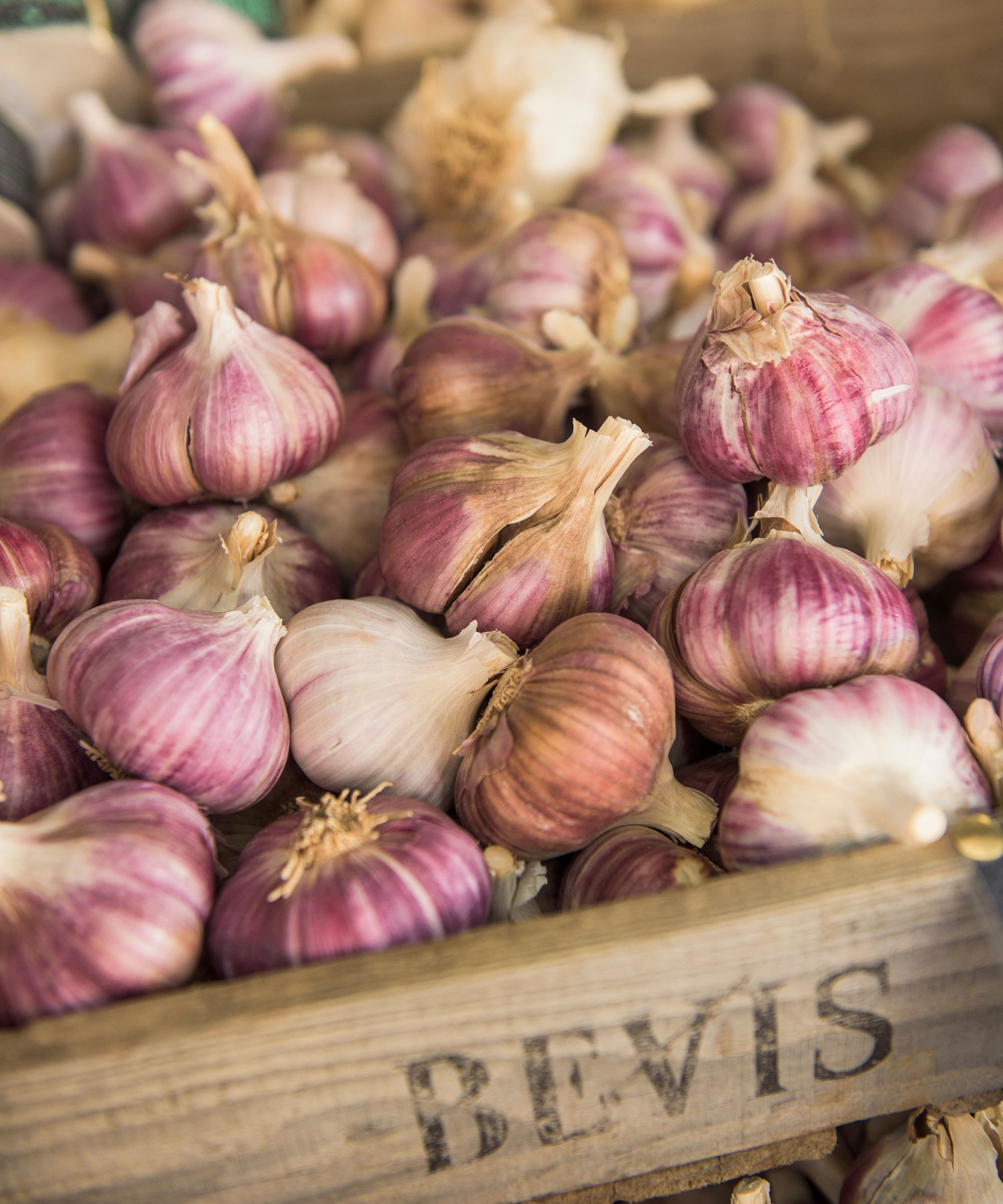
Photography/Adam Duckworth
Hardneck varieties of garlic will send up stalks, also known as scape, from the centre of the plant. Since most garlic is grown for its bulbs, the scape can be removed to increase bulb size by 20%.
‘Cutting off the scape will send all the energy to the bulb, increasing the bulb size rather than putting energy towards flowers and seeds,’ explains Francesco. ‘This can increase the bulb size by 20%.’
If you are hoping to use the garlic flowers in your kitchen, their mild flavour makes them a lovely addition to salads and sauces, you can skip this step. However, it is best to remove the flower before it develops.
5. Harvesting the garlic

Photography/Alison Mundie
While the garlic is growing you can take a few leaves here and there from the plants to use in salads. However, ‘don’t take too many at any time from one plant,’ warns Kate.
Some (but not all) of the leaves will have yellowed, and the bulb will be well developed, with curves around the cloves. As soon as the foliage has turned brown you can harvest garlic.
When to harvest garlic? This will usually occur between early June and late August. Francesco’s top tip is to aim to harvest your garlic on a warm summer day.
‘If you get the chance, harvest garlic on a hot sunny day so that the newly dug bulbs can be left on the bed to dry out,’ he explains. ‘Helping with preservation.’
'Best harvest your garlic before the leaves go yellow,’ advises gardener and author Charles Dowding, who teaches no-dig edibles gardening in Somerset, UK. 'In fact most of the leaves will still be green and for softneck garlic that means roughly by the end of June. For hardneck garlic, probably the middle of July. Check with your fingers or a trowel around the developing bulb, that you can feel the cloves differentiating. Slip a trowel or knife diagonally downwards to cut some of the roots, enough that you can gently lift the whole plant out, without snapping off the stem.’
Brush off as much soil as possible and trim the roots.
Don’t leave ripe bulbs in the ground too long or they will rot. Dry it thoroughly (avoiding intense direct sun); then store somewhere cool and dry indoors that has good airflow. Hang it or store in baskets.
How long does it take to grow garlic?
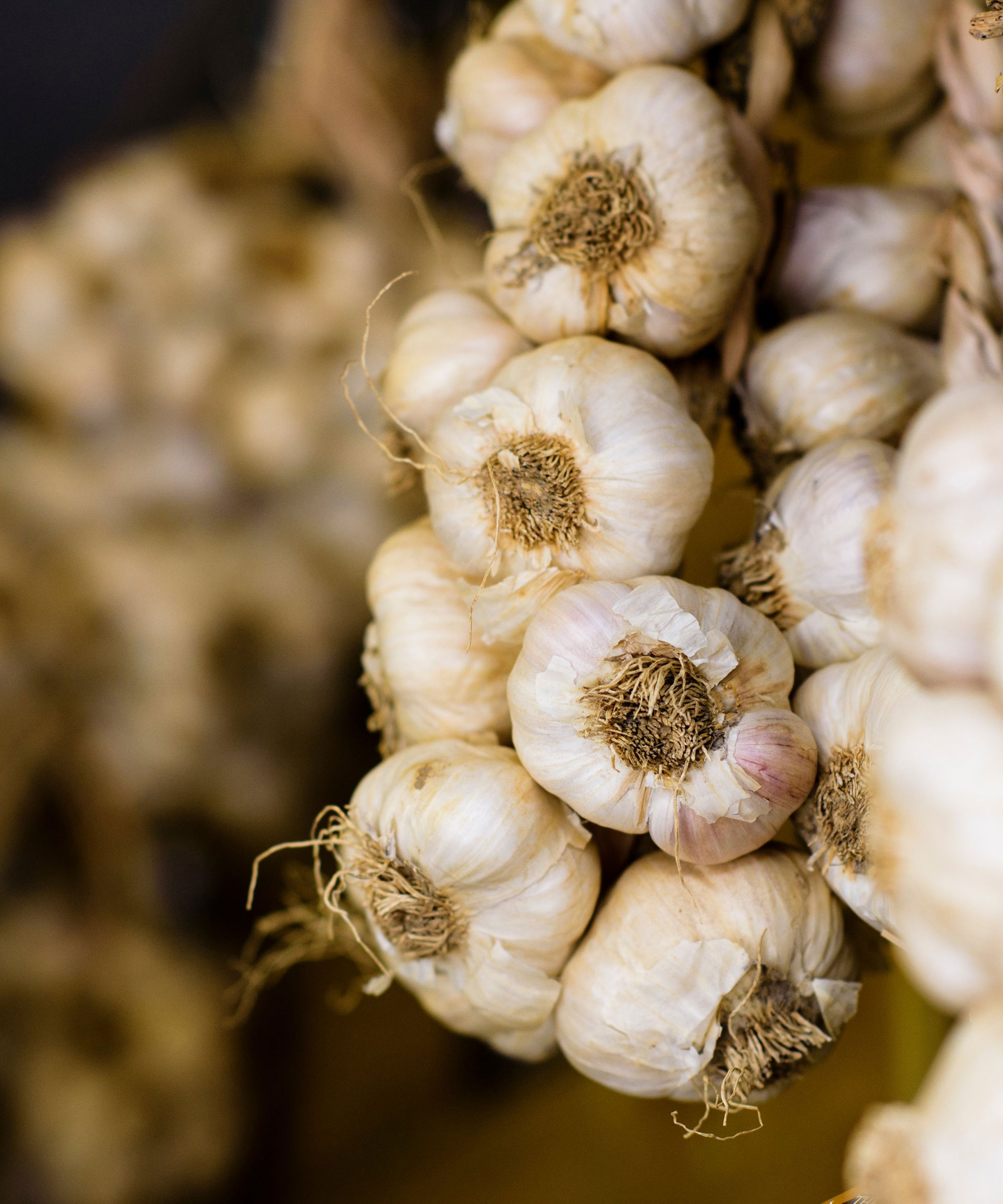
Garlic can take almost 10 months to grow before you are able to harvest the bulbs. Depending on the variety you have planted it you have planted in Autumn, they can be ready from early June to late July.
What month do you plant garlic?
When to plant garlic? It is best to plant garlic in fall. The bulbs need a period of cold weather in order to grow. Ideally they need a one-to-two month period at 0 to 10 degrees temperature for the bulbs to develop.
However, it is too cold outside in Autumn, you can also plant them up in Spring. ‘In my experience, autumn-planted garlic is ready four to six weeks earlier than spring planted garlic,’ explains Francesco.
Does garlic grow back every year?
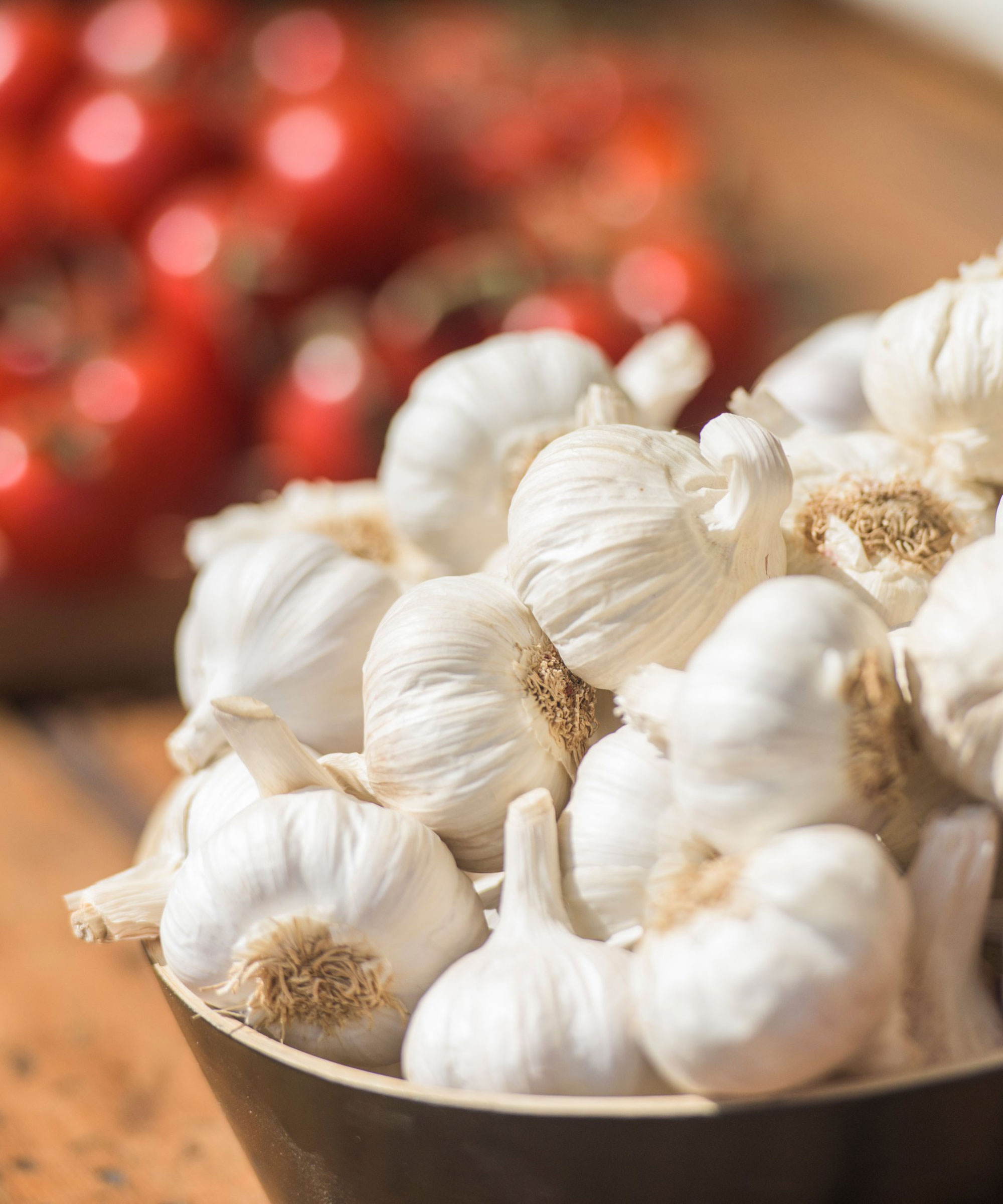
Garlic can be grown as a perennial, providing garlic every year. However, because it is grown for its bulbs, it is usually grown as an annual and replanted each year.
If you choose to grow garlic as a perennial, you will need to leave the bulbs to develop and grow for a few years, during which you can harvest the milder tasting leaves and flowers. In a few years time you should be able to dig up and replant your homegrown garlic and follow the above instructions to produce your own bulbs of garlic.
Sign up to the Homes & Gardens newsletter
Design expertise in your inbox – from inspiring decorating ideas and beautiful celebrity homes to practical gardening advice and shopping round-ups.

Rebecca has been working as a homes and interiors journalist for over four years. She first discovered her love of interiors while interning at Harper's Bazaar and Town & Country during my Masters in Magazine Journalism at City, University of London. After graduating she started out as a feature writer for Women's Weekly magazines, before shifting over to online journalism and joining the Ideal Home digital team covering news and features. She is passionate about shopping for well-crafted home decor and sourcing second-hand antique furniture where possible.
-
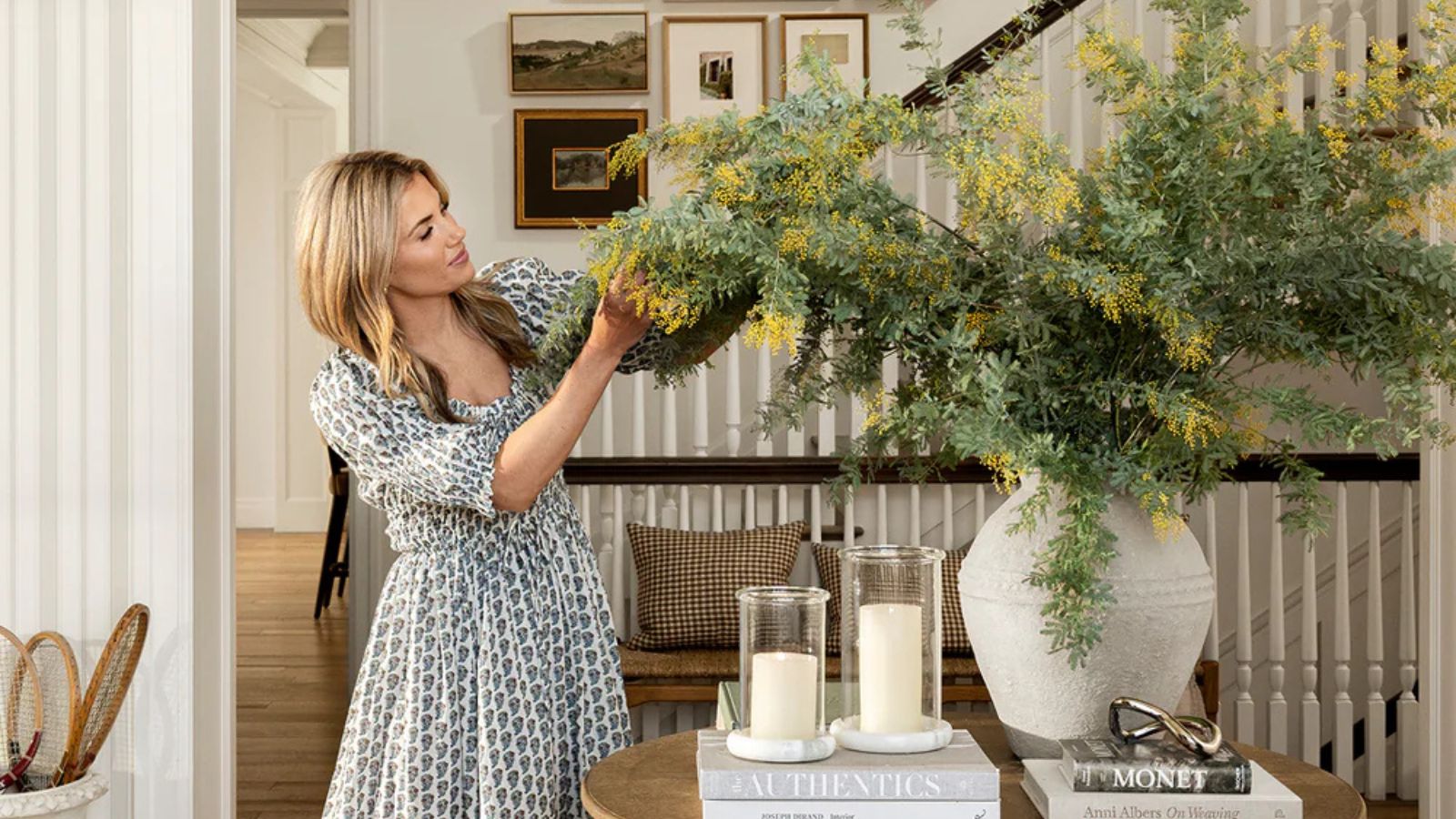 I've had a first look at the McGee & Co. summer 2025 collection, and I think you're going to fall head over heels for the vintage-style rattan pieces
I've had a first look at the McGee & Co. summer 2025 collection, and I think you're going to fall head over heels for the vintage-style rattan piecesThe new McGee & Co. drop is full of vintage charm – and the scalloped coffee table is my standout pick for summer
By Charlotte Olby Published
-
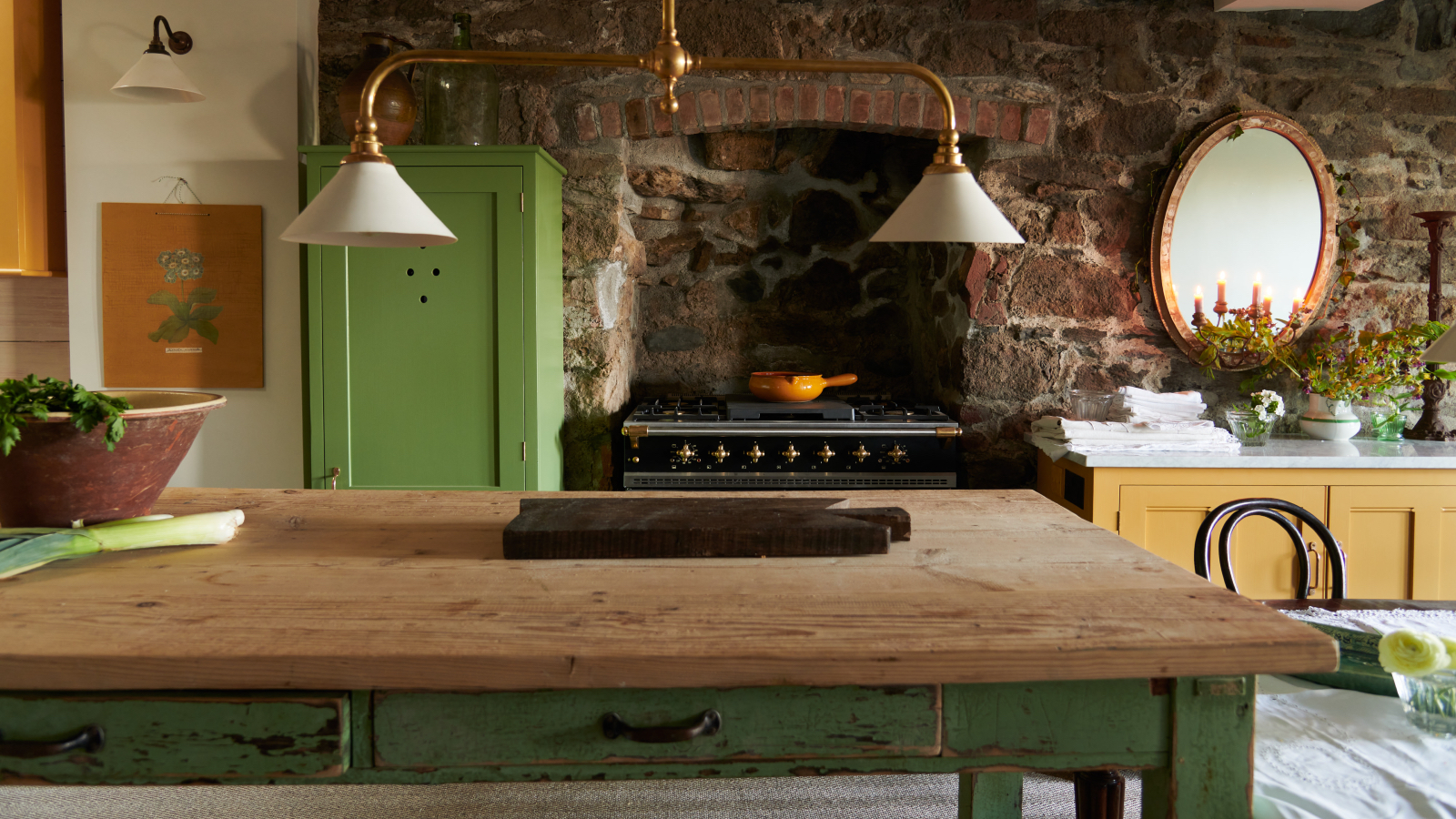 9 things you can clean with glycerin – this cheap and natural cleaner is perfect for indoor and outdoor use
9 things you can clean with glycerin – this cheap and natural cleaner is perfect for indoor and outdoor useFrom patio furniture to silverware, this hydrating and gentle cleaning agent will work miracles
By Ciéra Cree Published